Food photography has not been a priority for me since now. There's an alt account for my recipes I'm using and obviously have been taking food photos, but in a different way. Quality is always important, but since my camera was not a performant one, my focus was more on showing the dish, rather than making an artistic food photos.
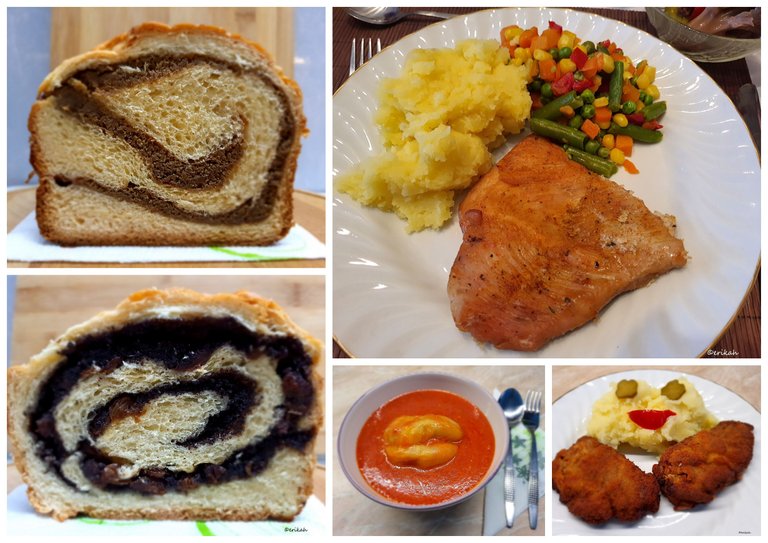
Food photography is never easy as subjects can be tricky in many ways. You have to learn a lot of tricks and even so, you need a lot of patience and time to do it right.
They say there's a lot of cheating in professional food photography and although I have no proof, I know what home made cooking looks like, compared to what you see in cooking magazines. They say dishes on the cover of these magazines are half cooked, glued together with hair spray, colored with food color and what not. I don't do that, ever. What I cook or bake is made as the recipe requires and food quality is always a priority, not the photos.
Now that my smartphone camera has a food option, I thought let's try it out to see what it is capable of, as well as learn to use it properly. I can't say I'm impressed as could have done better but recognizing it is also a good point, a step forward towards success.
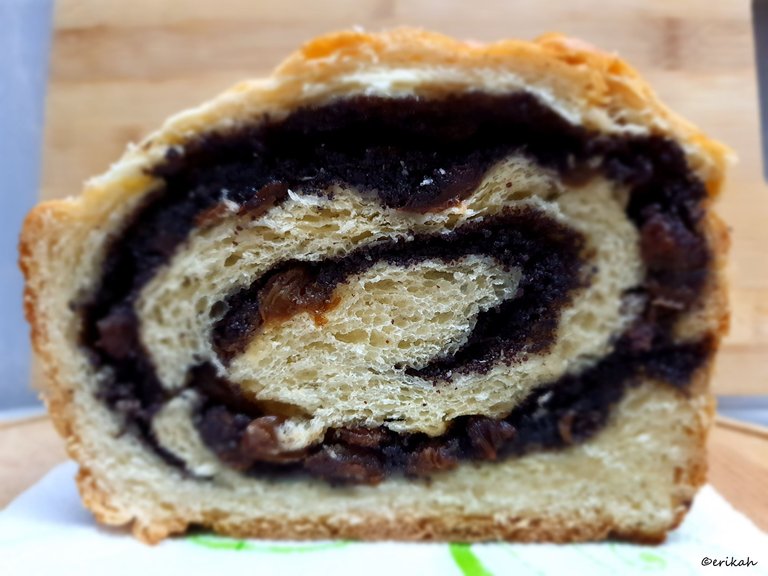
This is my poppy seed kalács, with raisin, that I made for Christmas.
Kalach, kalács, kolach, kolač, or colac (Russian: калач, Ukrainian: колач, Hungarian: kalács, Serbian: колач / kolač, Bulgarian: колач, Romanian: colac), is a traditional Eastern European bread, commonly served during various ritual meals. The name originates from the Old Slavonic word kolo (коло) meaning 'circle' or 'wheel'.
The Hungarian kalács is a sweet bread very similar to brioche, usually baked in a braided form, and traditionally considered an Easter food. Until the end of the 19th century, the preparation of kalács was similar to that of everyday bread; the difference was in the shape, and in the better/quality flour used for the kalács. Nowadays kalács is prepared from dough enriched with milk and eggs. It is baked in an oven or brick oven, sometimes directly on the stones of the brick oven, or on a baking sheet. source
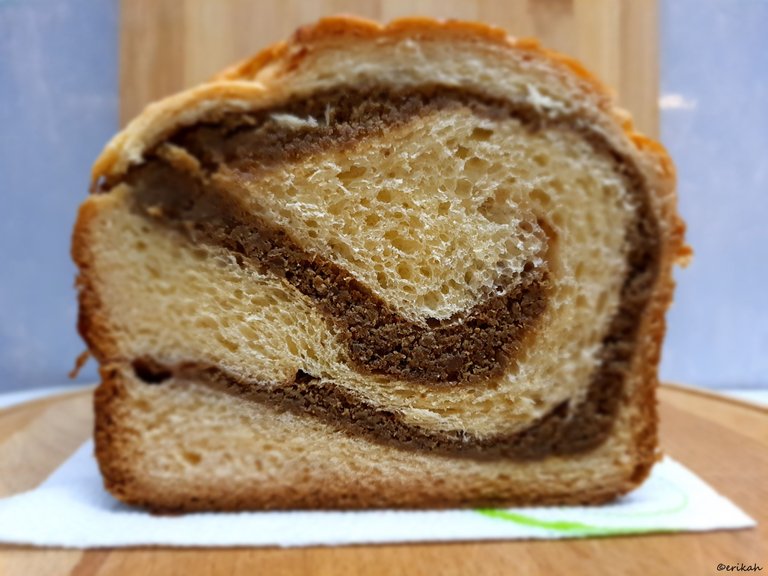
This is a traditional dish for Easter and Christmas as well. There's no holiday without it. It is usually available at bakeries, supermarkets and grocery shops, but what you get there, can't be compared to what I make at home.
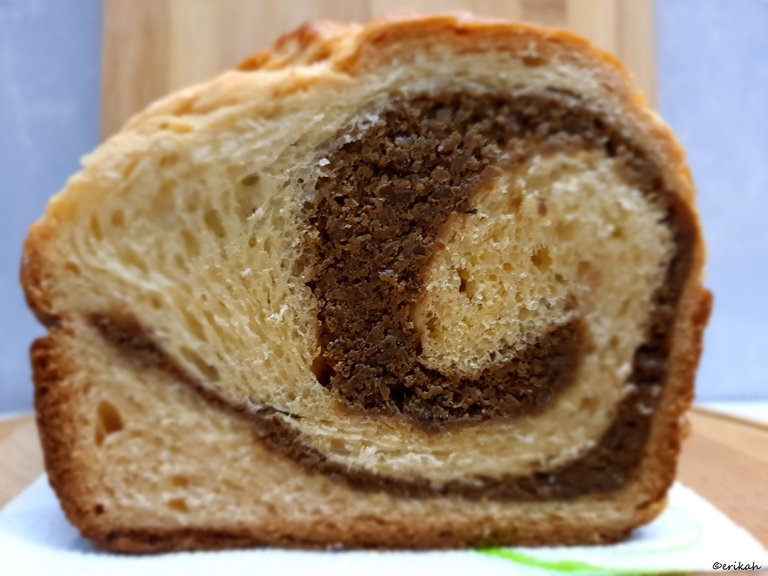
The filling can be anything you like, from poppy seeds, walnut, to cocoa and raisin and so on. I'm usually combining the filling as I like, but this time I chose the poppy with raisin and walnut.
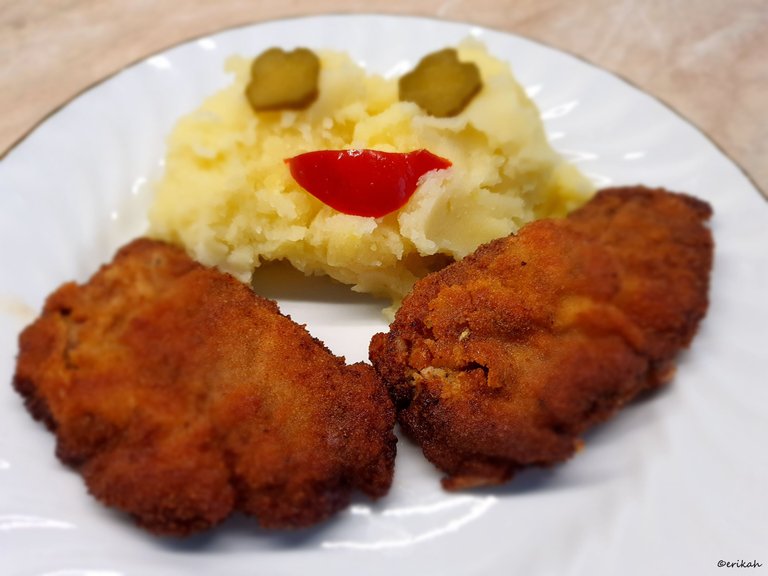
This is a total disaster, I mean the photo, not the schnitzel with mash potatoes. The food was really good but the photo ... that is a different story. This food function is focusing to the center of the screen and makes the rest a bit foggy. In this case the mash potato that I decorated to make it funny got out of focus and therefore it's foggy. Better pay more attention next time.
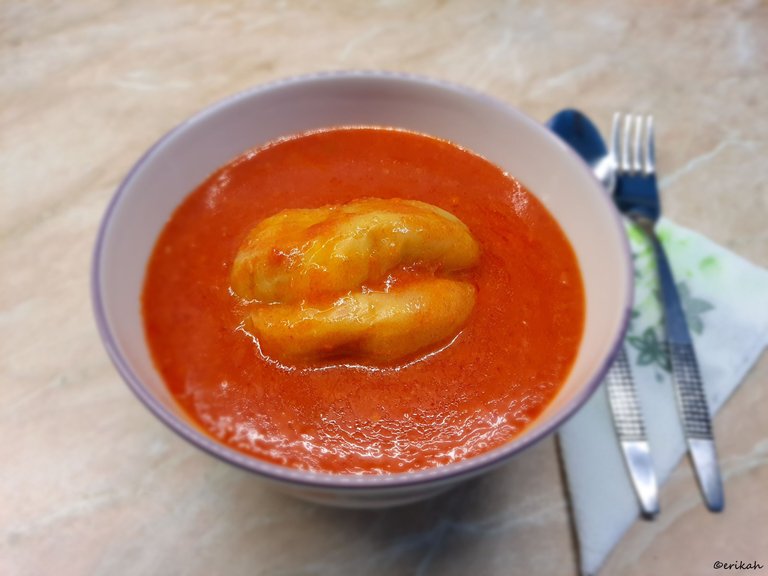
This is stuffed bell pepper, with tomato sauce, töltött paprika in Hungarian. This can be soup, or pottage, depending on what you prefer. Here, the serving was the most difficult to execute. When you're dealing with red tomato sauce, there's no room for error. You can't shake to bawl or the plate as there will be traces on the bawl you can't wipe clean and then you need another bawl. I've managed to do it right for the first time though.
There' another trick you have to consider when you're working with liquid, like soup that is greasy. Once you heat the soup, not only the steam will ruin the photo, but the reflection on the greasy sports will too. Therefore this soup was cold when I took the photo.
I'm not saying it's perfect, but can't complain either.
The dish is called Punjena paprika/Пуњена паприка in Croatian and Serbian language, Filovana paprika in Bosnian, Polnjena paprika in Slovenian, Palnena Chushka in Bulgarian, Polneti Piperki in Macedonian, Plněná paprika in Czech, Plnená paprika in Slovak, and Töltött paprika in Hungarian, meaning "stuffed peppers", Фарширований перець in Ukrainian, meaning "stuffed pepper". It is popular as a summer meal in Hungary, Czech Republic, Slovakia, Serbia, North Macedonia, Bulgaria, Bosnia, Croatia, Slovenia, Montenegro, and Ukraine. There are also many variations of the dish across the Balkans. source
As you can see, this is a widespread dish in Europe, you can find it in most of the countries.
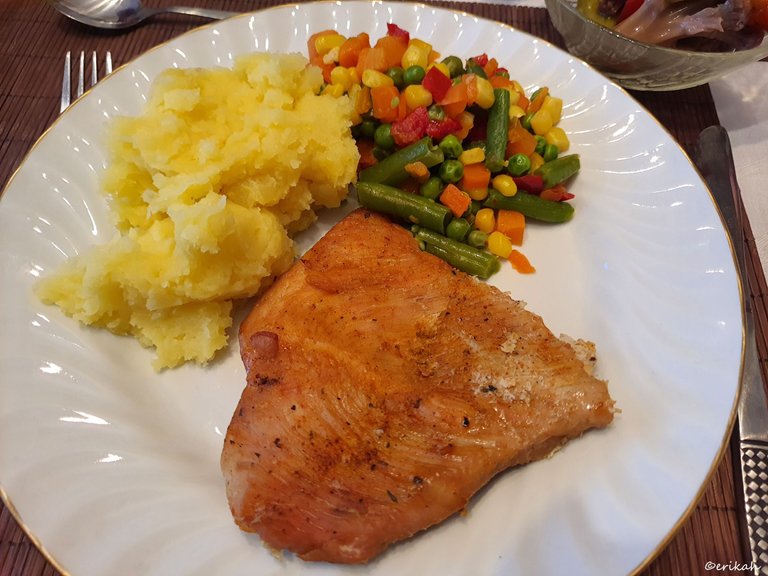
This is grilled turkey breast (homegrown, from the neighbors), with mash potato and vegetables. This was served as Christmas dinner. The traditional Christmas food in stuffed cabbage in Transylvania. We also had that, but it wasn't "professional" enough to take photos about it. Maybe next time.
This photo was taken without using the food function though.
If I would rate my photos, I'd give myself a 3 out of 10. I need to practice and learn how to take better photos.
So, what would you choose from here? 😃